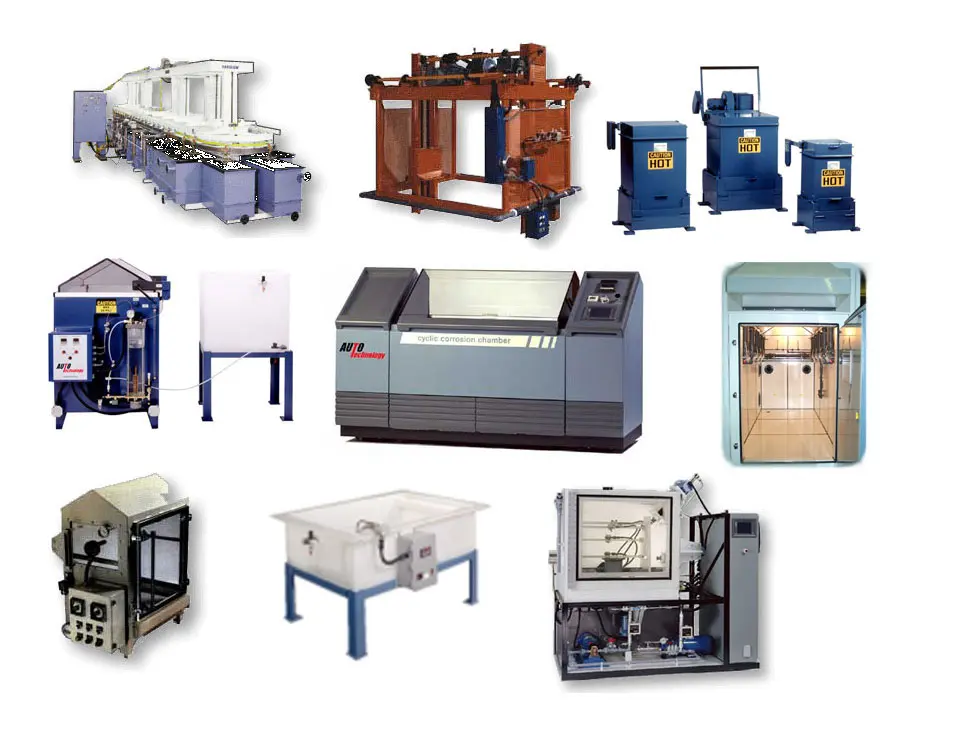Corrosion Test Chambers: Types and Key Considerations
If you’re involved in product development, understanding corrosion (environmental) test chamber types and functions is central to predicting the longevity, performance, and durability of your products under various environmental stressors.
The specific type of test chambers you’ll need is determined by the nature of your product offering. Read on as we outline three types of test chambers and their functions: cyclic corrosion test chambers (CCT chambers), multi-purpose fog chambers, and mixed flow gas chambers (MFG).
The Role of Corrosion Test Chambers
Corrosion test chambers simulate and accelerate real-world corrosive conditions in a controlled environment. This enables you to identify potential weaknesses in materials and coatings, assessing their resistance to corrosion over time.
The reasons you may utilize these climate chamber technologies include:
- Ensuring product reliability.
- Meeting industry standards.
- Improving product quality through their rigorous testing functionalities.
- Aligning with regulatory bodies.
Environmental test chambers come in different forms — each designed to replicate specific environmental conditions. At Auto Technology, we offer a range of custom environmental test chambers, working with companies like yours that aim to enhance the longevity and durability of their products.
Our offerings include:
- Cyclic corrosion test chambers (CCT chambers) for simulating a wide range of climatic conditions through controlled cycles.
- Multi-purpose fog chambers, capable of performing various corrosion tests beyond just salt fog.
- Mixed flow gas chambers (MFG), designed for testing in environments with pollutant gasses at specific temperatures and humidities.
Below, we’ll cover the functions of each and how our team of experts can help ensure your products withstand their intended environments. If you’re looking for more personalized guidance, our team is available to answer any of your questions.
Three Environmental Testing Chamber Types: Key Considerations
Each of the following chambers falls under the umbrella of environmental test chambers — working to ensure the reliability and longevity of your product amid its intended environmental conditions.
Cyclic Corrosion Test Chambers (CCT Chambers)
CCT Chambers simulate a variety of environmental conditions, including salt spray, humidity, and drying, among others — offering thorough insights into how your product’s materials will perform across their lifecycle. Moreover, customized cycle sequences allow for precise testing according to your specific industry standards and product requirements.
Pertaining to your specific needs, the key considerations when selecting a CCT Chamber include:
- The size of the climatic test chamber.
- The range of environmental conditions it can simulate.
- Its ability to replicate specific corrosion processes relevant to your products.
Also consider the chamber’s control and automation capabilities, ensuring ease of use and repeatability of tests, And, if relevant, account for its compatibility with your existing testing protocols.
You can learn about our CCT Chambers and their functions by clicking here. We offer the industry’s most advanced and flexible CCT Chambers, encompassing a wide selection of environmental simulations to meet the rigorous demands of various sectors, including automotive, aerospace, defense, electronics, and more.
Multi-Purpose Fog Chamber
Multi-Purpose Fog Chambers, as the name indicates, are designed for versatility. The range of tests these climatic chamber technologies facilitate include:
- Salt fog.
- Humidity.
- Acetic Acid Salt Spray (AASS).
- Copper-accelerated acetic acid salt spray (CASS).
- Prohesion testing.
- And other corrosive atmospheres.
When choosing a Multi-Purpose Fog Chamber, consider the types of corrosion tests most relevant to your product’s environment and usage. Specifically, this may involve accounting for:
- The chamber’s capacity and size to accommodate your samples.
- The precision of control in temperature and humidity settings for replicating specific environmental conditions.
- The availability of nuanced features — such as cyclic corrosion testing capabilities, data logging, and customizability of test parameters — to ensure relevant testing outcomes.
Our Multi-Purpose Fog Chambers are designed with these considerations in mind, providing a robust solution for conducting comprehensive corrosion testing. Notably, our technology features a non-corrosive fiberglass construction, a variety of sizes ranging from 20 to 90 cubic feet, a transparent cover for easy sample viewing, and a low-profile design for ease of chamber loading — among other features.
Mixed Flow Gas Chamber (MFG Chamber)
MFG Chambers are tailored for testing components that require exposure to pollutant gasses at precise temperature and humidity levels. Specifically, they’re designed for corrosion testing of PCBs, electrical connectors, and other components that require the simulation of environmental conditions with specific pollutant gas concentrations.
When choosing an MFG Chamber for your product, a central consideration is its scope of control over temperature and humidity, ensuring it facilitates an accurate replication of the environmental conditions your products may encounter.
Our MFG Chambers offer just that: fully automated control software and recipe management. Our chambers allow for precise adjustments in temperature range (30 – 50C) and humidity (40 – 80% RH), alongside a wide range of pollutant gas concentrations (H2S, SO2, NO2, Cl2).
Talk to an Expert
Whether you’re considering adopting an MFG Chamber, CCT Chamber, and/or Multi-Purpose Fog Chamber, or another environmental chamber, our team of experts is here to help. At Auto Technology, our climate chamber technologies are top-of-line — trusted by industry leaders across automotive, aerospace, electronics, and defense sectors to ensure their products withstand harsh environmental conditions.
To learn how our custom environmental chamber technologies can help you, get in touch with an Auto Technology team member today.

